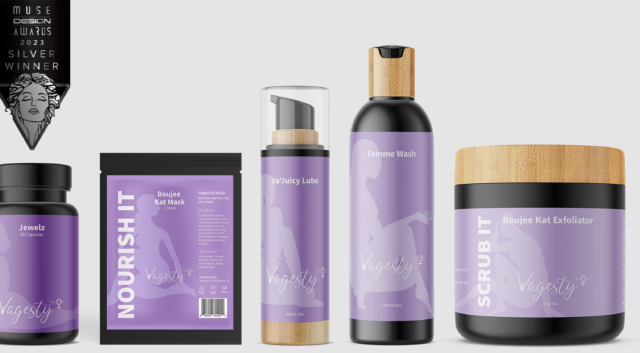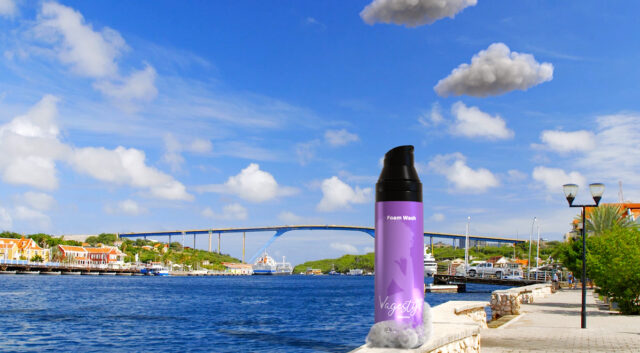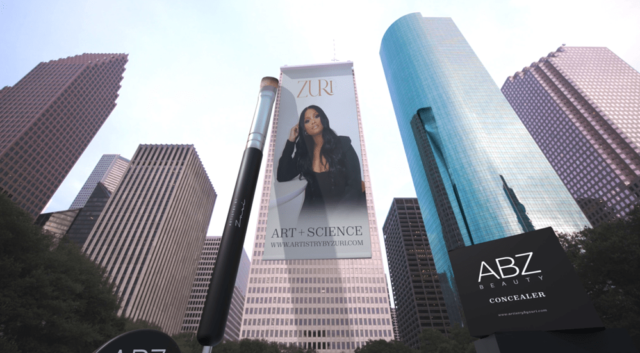Despite McDonald’s boasting twice as many restaurants, five times the ad budget and 10 times the revenue, Burger King’s marketing innovations have had lasting impact.
For more than 60 years, McDonald’s has held strong as an icon of America’s post-war boom. As the world’s largest fast food chain — a concept it pioneered — it influences how people around the world eat and live while maintaining a sizable lead over its competitors in number of locations, annual revenue and advertising spend.
McDonald’s success has opened the doors to countless competitors that have tried to eat into its dominance by differentiating their products, value proposition or brand identity. For half a century, its main rival — in the public consciousness, at least — has been Burger King. But what is to be made of a rivalry where one side has about twice as many restaurants, five times the ad budget and 10 times the revenue? These days, McDonald’s can easily dismiss Burger King by saying — to quote one of its most famous brand ambassadors — “I don’t know her.”
“McDonald’s was the leader for the longest time, so they spoke with a voice of someone who is a leader in the market. They don’t engage in the rivalry, they were always very stable,” said Fernanda Bürgel, creative director at agency PeterMayer. “Burger King, on the other hand, being the underdog, got to have all the fun — they got to poke at them and do things that felt irreverent and innovative.”
While trying to dethrone McDonald’s, Burger King has driven innovation in marketing, developing tactics that persist today throughout the fast food industry and beyond. Even if it’s a bit one-sided, the rivalry explains much about advertising’s past, present and future — one that could prioritize creative effectiveness over creative excellence on battlefields like sustainability and digital channels.
McDonald’s was founded in 1940 by brothers Richard and Maurice McDonald in San Bernardino, California. In 1948, the brothers turned their focus to profit-driving hamburgers and launched the Speedee Service System, applying production line principles to create the concept of fast food. These days, the company dates its founding to when franchisee Ray Kroc joined the company in 1955; Kroc bought out the McDonald brothers in 1961 and introduced the Golden Arches in 1962.
Inspired by a visit to the original San Bernardino McDonald’s restaurant, Keith J. Kramer and Matthew Burns opened the Insta-Burger King in Jacksonville, Florida, in 1953. When the company faltered in 1959, it was purchased by Miami franchisees James McLamore and David R. Edgerton, who shortened the name to Burger King. The pair ran it as an independent company for eight years before selling it to the Pillsbury Company in 1967 — the first of many transactions that would define the brand’s trajectory.
As McDonald’s grew in the 1960s, its advertising focus was around its Ronald McDonald mascot, which began as part of a local TV sponsorship of “Bozo’s Circus.” After appearing in local TV spots, the iconic clown made his national TV ad debut during the 1965 Macy’s Thanksgiving Day Parade (which McDonald’s sponsored) and the 1966 Super Bowl.
Along with the concept of fast food, McDonald’s helped lay the groundwork for how many franchised chains structure their marketing organizations. As the chain expanded in the 1960s, franchisees in 1967 began contributing 1% of earnings to the Operators National Advertising fund, growing McDonald’s ad budget from $5 million to $15 million in 1969 and $60 million by 1974, eventually making the chain one of the nation’s top advertisers.
While McDonald’s led the way, Burger King was forced to establish its brand identity in contrast to its competitor. For example, McDonald’s had great success turning a franchisee’s creation, the Big Mac, into a menu staple; its “two all-beef patties, special sauce, lettuce, cheese, pickles, onions on a sesame-seed bun” formulation was a print ad and then a popular jingle. In kind, Burger King rolled out its “Have it your way” slogan and a jingle of its own that pushed back at the Big Mac’s specificity: “Hold the pickles, hold the lettuce. Special orders don’t upset us. All we ask is that you let us serve it your way!”
McDonald’s continued to grow, expanding around the globe and notching $1 billion in sales in 1972. While Burger King had some success with its marketing in the ’70s — including its groundbreaking product tie-ins with “Star Wars” — the company faced internal struggles with its franchisees and hired executive Donald N. Smith away from McDonald’s to oversee a company revamp called “Operation Phoenix,” which focused on restructuring corporate practices at all levels of the business. When that plan didn’t work, Smith was replaced by Pillsbury executive Norman E. Brinker, who decided to bring the fight to McDonald’s.
In 1982, Burger King launched an ad campaign (starring a 4-year-old Sarah Michelle Gellar) that called out McDonald’s by name and claimed the chain’s burgers were 20% smaller than those of Burger King. The attack ad was a first — but certainly not the last — for the industry, and resulted in McDonald’s suing Burger King and agency J. Walter Thompson for what it described as a “false, deceptive, disparaging, unfair and misleading” campaign.
“We’re mad and justifiably so. We think they must be in pretty bad shape if they must stoop to misleading advertising,” Sid Rudolph, chairman of Wendy’s parent company, said of the campaign, which also claimed his chain’s burgers had inferior taste.
While the suit was eventually settled, the attack ads boosted same-store sales. However, Burger King would be in “pretty bad shape” again soon enough. Brinker left soon after the controversy and eventually founded Brinker International, the restaurant group that now owns Chili’s and Maggiano’s. Burger King was under pressure from McDonald’s — which was reportedly spending $80 million to $100 million to advertise its McDLT item — and upstart Wendy’s and its iconic “Where’s the beef?” campaign. It again turned to J. Walter Thompson to ask consumers a question of their own — “Where’s Herb?” — a historic flop about a character who had never eaten a Whopper in his life.
“Where’s Herb?” would be the last Burger King campaign by J. Walter Thompson, and was followed by a string of agencies and unmemorable campaigns as various corporate overlords played hot potato with the Burger King brand until it was put up for sale in 2000 and purchased by a group of investment firms for $1.5 billion in 2002.
Throughout the end of the 20th century, McDonald’s remained relatively loyal to its agency partners. Needham, Harper & Steers won the account in 1970 and kept it until 1981, when McDonald’s moved the account — despite Needham’s superior creative — to Leo Burnett USA, which had worked to win international pieces of an increasingly global marketing apparatus. The chain moved back to DDB Needham Worldwide, Chicago in 1997, where it would stay until McDonald’s posted its first-ever quarterly loss in 2003 amid tough competition and changing consumer tastes.
After the earnings hiccup, McDonald’s quickly made plans to revitalize its business, which included a global agency competition. The surprising winner was Heye & Partner, a German subsidiary of DDB Worldwide, that created the “I’m lovin’ it” theme. McDonald’s rebounded quickly and began using a roster of shops on a per-project basis, and “I’m lovin’ it” — with its iconic “ba-da-da-da-da” melody and controversial origin story — has remained at the core of its marketing for nearly two decades.
Meanwhile, the new millennium would see Burger King initiate the first of two periods of memorable, game-changing creative. TPG Capital’s first moves after acquiring the company in 2002 were to reinstate the “Have it your way” slogan and to hire Crispin Porter + Bogusky. CP+B was responsible for nearly a decade’s worth of edgy, subversive campaigns, including the viral “Subservient Chicken” stunt, “Whopper Sacrifice” Facebook app and the remaking of the chain’s “King” mascot into a plastic-faced weirdo.
CP+B’s campaigns predicted what kind of tone and tactics would come to dominate advertising, especially after social media became a dominant cultural force. The Coq Roq campaign — which included a fictional band complete with original music — and bestselling adver-games for the Xbox were ahead-of-the-time efforts predating the musical branding and gaming-related tactics that have become commonplace.
“Burger King had that time with Crispin where they did these really out there, creative, pushing boundaries [campaigns], and then they slowed down for a while,” PeterMayer’s Bürgel said.
The recession of the late 2000s boosted sales at McDonald’s, which benefited from a preponderance of factors, including Americans trading down to cheaper consumer goods, international growth and the introduction of its McCafe coffee line. Burger King was not as lucky: The recession hit hard the young male demographic at which the chain and CP+B aimed their efforts. In 2010, Burger King was sold to Brazil’s 3G Capital. The new leadership tapped U.S. creative agency McGarryBowen, which removed the creepy king and shifted ad focus back to food. Still, same-store sales dips continued, with Wendy’s surpassing Burger King as the No. 2 burger chain by U.S. sales volume in 2012.
In 2014, a shift in marketing strategy occurred around yet another corporate restructuring. Months before merging with Tim Hortons to form Restaurant Brands International, Burger King hired former Unilever executive Fernando Machado for the new position of senior vice president for global brand marketing and selected WPP’s David as lead global agency.
The pair of David and Machado, who would go on to serve as global CMO for both Burger King and RBI, would lead the chain through its most recent and notable period of marketing, one marked by a “hackvertising” approach that repeatedly inserted the brand into pop culture in innovative ways, from spoofing Google Home devices to digitally setting competitors’ ads aflame. Even in campaigns created for the brand by other agencies, a spirit of competitive sparring was omnipresent.
“They knew who they were talking to and they were very specific; every time that they did something, it was a refreshed look at an audience … they are tapping on consumer insights to really tap on that passion,” Bürgel explained. “You see that with the competitors — like all the work that [Wieden+Kennedy] did for KFC, it was very clear in its understanding of audiences — and I think it positioned the brand in a fresh way.”
A key campaign that brought together Burger King’s hackvertising and competitive sparring tactics was the “Whopper Detour,” a stunt that used mobile geofencing to steer customers away from McDonald’s to promote the order-ahead features of Burger King’s redesigned app. One of the best campaigns of the late 2010s, “Whopper Detour” not only drove 1.5 million downloads of the chain’s app, but made a deeper impression than most marketing stunts.
“It’s a psychological thing where you’re actively saying, ‘Hey, you need to go to this place, and then actively in person, reject it, and go to the competitor.’ I don’t know that I’ve ever seen an execution that’s ever done that… this is about as cold-blooded as it gets,” said Paul Prato, executive creative director at agency PPK.
In early 2020, Burger King returned with a campaign that broke the mold again… by embracing mold. The “Moldy Whopper” campaign showed its signature menu item covered with blue and green growth as a way to promote the removal of artificial preservatives from its products. It was also a jab at urban legends about the unnatural life span of some McDonald’s items.
“It’s polarizing, it’s disgusting, it’s beautiful, it’s whatever… it was the answer to [those stories],” Prato said.
Just weeks after the debut of the “Moldy Whopper,” the coronavirus pandemic took hold in the U.S. Burger King sales dropped 25% in the year’s second quarter, when lockdowns took effect across the country, erasing gains made in the second half of 2019. And while lockdowns also hurt McDonald’s, the chain was able to recover more quickly than its competitors thanks to previous investments in what it calls “the three Ds:” drive-thru, delivery and digital, channels that are expected to continue driving future growth for QSRs.
While the “Moldy Whopper” had sparked visceral reactions in consumers and won big at the Clio Awards and Cannes, no amount of online chatter or industry awards can make up for lack of growth. Even as the company began to recover from the pandemic’s disastrous effects, RBI saw Machado leave in April 2021, kicking off a marketing leadership shuffle that culminated in a review of Burger King’s creative and media accounts this year. In April 2022, independent Chicago shop OKRP was tapped as AOR.
“It’s the first time in my lifetime that both of these major, preeminent restaurant brands are both independent, creatively… it sends a powerful message,” Prato said of the rivals; indie giant Wieden+Kennedy New York is the lead agency for McDonald’s.
Despite being a possible boon for independent creative agencies, the Burger King pitch could still be seen as worrisome for the larger agency space.
“They were looking for an agency to deliver creative effectiveness instead of creative excellence — that’s chilling. That should be concerning to hear for creatives in our industry: a marketer like that who has come to believe that those two things are mutually exclusive,” Prato said.
As Burger King looks to kick off its next era of marketing, McDonald’s is standing tall. The brand in September 2019 selected Wieden+Kennedy New York as its lead creative agency after three years with Omnicom Group’s DDB, which had created a bespoke agency for the chain.
Wieden struck gold for the golden arches early, crafting a “Famous Orders” spot for the Super Bowl in 2020 that has gone on to be the basis for its celebrity-driven platform of the same name. The effort uses the favorite meals — and obsessive fandoms — of music superstars Travis Scott, Mariah Carey, BTS, Saweetie and J Balvin to drive sales and app downloads. “Famous Orders” ties into not just celebrity culture but lets customers focus on their own relationship with the brand while tweaking McDonald’s overarching marketing efforts.
“The new strategy is on this premise that it doesn’t matter how famous you are, everyone has a McDonald’s order. They can layer that on top of ‘I’m lovin’ it’ and keep the consistency, but also freshen the thing up,” said Cathy Taylor, U.S. commissioning editor at WARC. “I’m more used to seeing wholesale changes in strategy, and that’s not what they did. They just found a really good way to keep interpreting that line.”
McDonald’s success with brand ambassadors has led to some imitation by Burger King and its sister brands, with mixed results. Burger King used its “Keep It Real Meals” — which featured celebrities’ real names instead of their stage ones — to promote the elimination of 120 artificial ingredients from its menu, a focus on real ingredients that continues the thematic push of the Moldy Whopper campaign. For its part, McDonald’s recently ran a campaign in Norway that tackles the chain’s role in littering by focusing on its own “iconic trash.” These efforts suggest the connected issues of healthy eating and sustainability could be the brands’ next battlegrounds.
“It takes a company that is important in the world to go out and affect change in something, ″ PeterMayer’s Bürgel said. “Whoever does that first will have an amazing competitive advantage… it’s like the first man to go on the moon — you get to claim you were the first QSR that actually solved this very specific issue that affects everyone.”
However, it can be difficult for big brands to take big actions on issues like sustainability that affect entire corporate structures. Even in marketing around the topic, brands like McDonald’s are just scratching the surface of what can be done creatively.
“If you see the level of ideation that it took to get to a Moldy Whopper or to Subservient Chicken, it’s deep down — it’s not the first idea that someone presented to them. I feel like we’re still in the first-idea category for sustainability,” Bürgel said.
Whether focused on sustainability, plant-based foods, increasingly important channels like delivery or emerging digital spaces like the metaverse, the next era of marketing from McDonald’s and Burger King will be building on or trying to alter decades of brand equity and identity.
The two brands have very different emotional bonds with consumers, according to strategy agency MBLM, which uses data science to inform proprietary brand intimacy rankings that are based around archetypes like indulgence, identity and ritual. McDonald’s is strong on nostalgia, a powerful brand intimacy archetype, while Burger King falls below average on most of the archetypes, failing to differentiate or stand out for any particular attribute. Changing these attitudes goes far beyond any one ad campaign or activation, explained Mario Natarelli, managing partner at MBLM.
“Brand intimacy is more of a long term measure; think of it more like trying to turn a tanker,” he said. “That’s good news when you’re managing crises or you’re trying to weather some bad times, but it’s also bad news if you’re trying to turn this thing in the right direction.”
For Burger King, the job of turning around the tanker now falls to OKRP, which has been given the lofty goal of reclaiming the chain’s status as an iconic brand by driving relevancy and authenticity in culture — an imperative for brands in the QSR space and beyond. As brands in the industry shake up marketing leadership and partnerships in an effort to engage younger consumers, Burger King still faces an uphill battle against its archrival.
“Burger King is commenting on culture,” PPK’s Prato said, “[but] culture is commenting on McDonald’s.”





